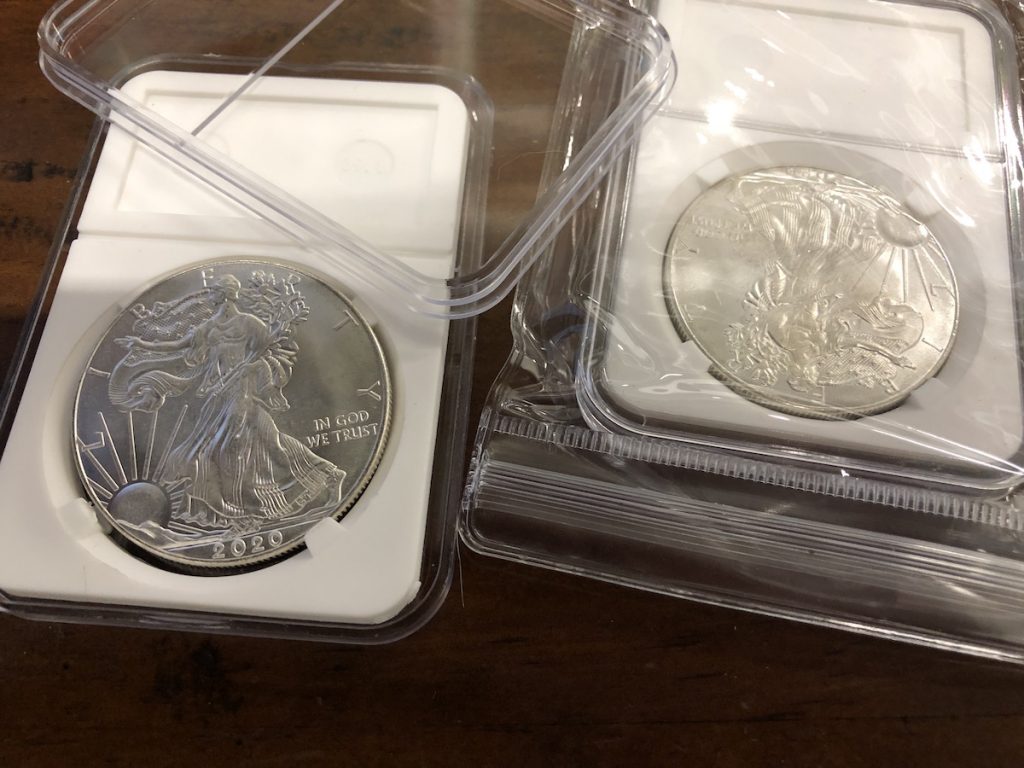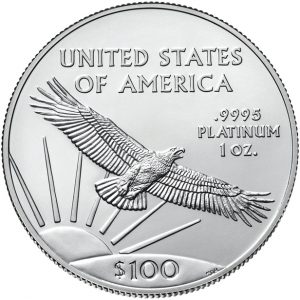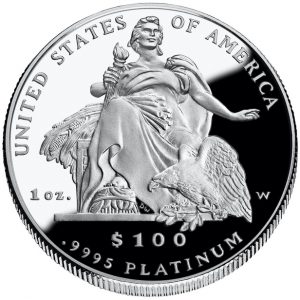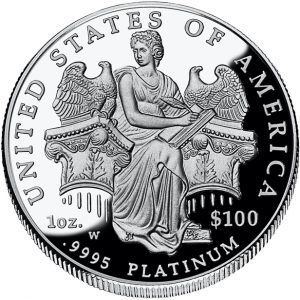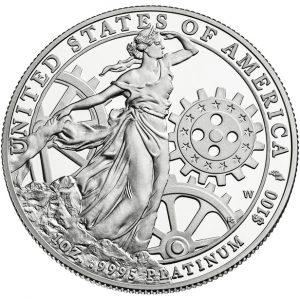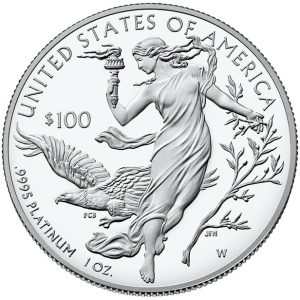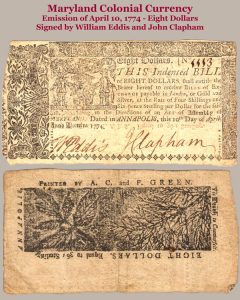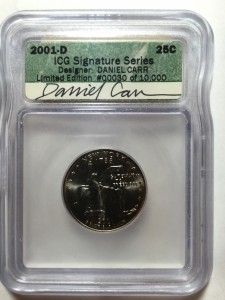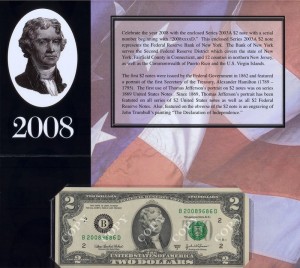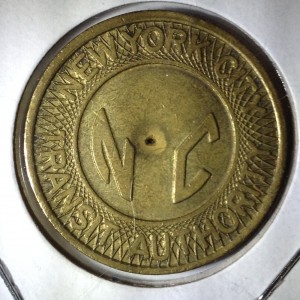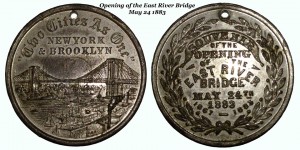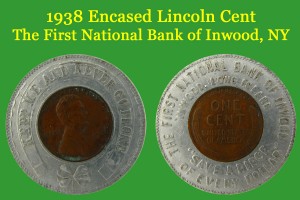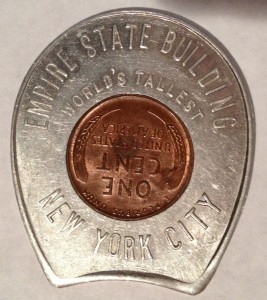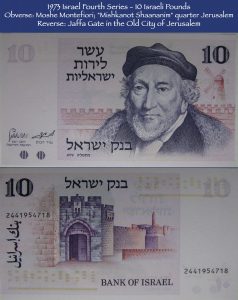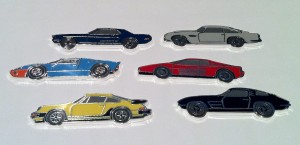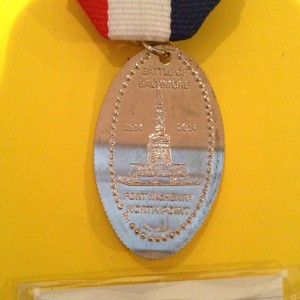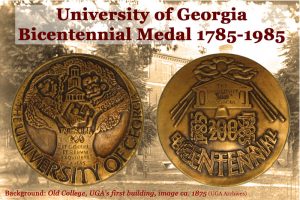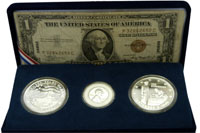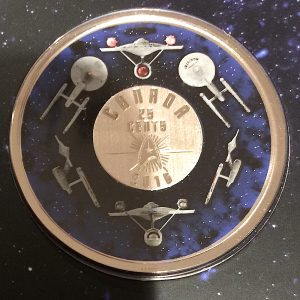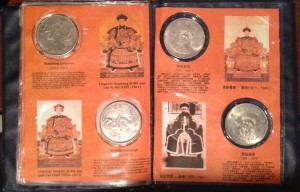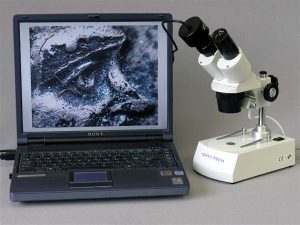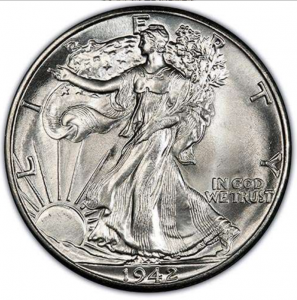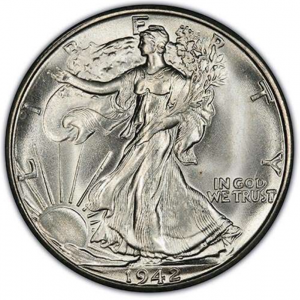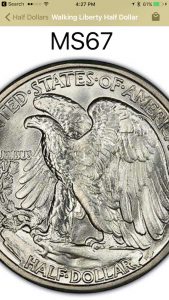SCAM ALERT: CHINESE COUNTERFEITERS ARE BACK
The Chinese scammers are back after a brief hiatus. They are flooding social media with advertising for fake coins. I found three ads from these scammers offering American Silver Eagles for $9.95 on Facebook in the last two days.
As I type this, silver is $23.73 per troy ounce. It means that that the American Silver Eagle contains $23.73 worth of silver. Even with a modest numismatic premium of 5-percent (below the current market value), a silver bullion coin should cost around $25.00. A quick market survey shows that legitimate dealers are selling ungraded American Silver Eagles for $33-36 each. Coins with the Type 2 reverse are selling for $1-3 more.
Proof American Silver Eagles are more expensive because they cost more to purchase. If the U.S. Mint sells American Silver Eagle proof coins for $73.00 and dealers on the authorized purchase program receive a 5-percent discount, the wholesale price is $69.35 per coin.
Who would sell a proof coin less than the wholesale cost? If it is a genuine coin, then it is likely stolen merchandise. Otherwise, scammers are selling fakes.
Before you purchase these alleged “good deals,” please remember my five rules:
- NO LEGITIMATE DEALER IS SELLING BULLION COINS FOR BELOW THE SPOT PRICE!
- IF THE DEAL IS TOO GOOD TO BE TRUE, IT LIKELY IS NOT A GOOD DEAL!
- IF THE DEALER DOES NOT IDENTIFY THEMSELVES ON THEIR WEBSITE, THEY ARE LIKELY HIDING SOMETHING.
Check the “About” or “Contact” page. If there is no contact information, then they are hiding. If the address is in China or the Middle East, they will sell you counterfeit merchandise. - IF THE SITE IS “POWERED BY SHOPLAZZA,” IT IS LIKELY A SCAMMER SITE.
According to contacts in the information security industry, the service is run by Chinese companies known to sell counterfeit merchandise. - IF THERE ARE ANY QUESTIONS, THEN DON’T PURCHASE THE COINS!
Last year, I purchased two coins knowing they are counterfeit for educational purposes only. I used gift cards to purchase the coins to prevent exposing my credit card information. Both coins are made of nickel-plated steel and contain no silver.
- Two counterfeit American Silver Eagles purchased from LIACOO, a company based in China who advertised on Facebook.
- The font for LIBERTY is too thin. Also, the stars in her flag draped over the shoulder are too small.
- Aside from the rims being to thin, look at the U in United and the dash between SILVER and ONE. These are not correct for the 2020 ASE.
The Under-Appreciated Platinum Eagle Proofs
Over a week ago, the U.S. Mint announced that they will begin a three-year series of the American Platinum Eagles proof coins featuring designs inspired by the Declaration of Independence. After looking at the designs and the designs of past platinum proof coins, they may be one of the most under-appreciated series of coins produced by the U.S. Mint.
- American Platinum Eagle bullion reverse design
- 1999 American Platinum Eagle Proof reverse – Vistas of Liberty Reverse Designs – Eagle Above Southeastern Wetlands
- 2004 American Platinum Eagle proof reverse – Daniel Chester French’s “America” that sits before the U.S. Customs House in New York City.
Since its introduction in 1997, the U.S. Mint has produced four series of proof coins with the reverse honoring different aspects of the nation. To see the list, see the “U.S. Coins by Type” page.
What distinguishes these coins are the well-executed reverse designs that few get to see or pay attention. It may be difficult for the average collector to consider collecting these coins because of the price of platinum has been either on par or higher than the price of gold. Also, platinum is not as well regarded as gold or silver as a precious metal causing it to be overlooked.
- 2006 American Platinum Eagle proof reverse – Branches of Government Series – “Legislative Muse” representing Legislative Branch
- 2013 American Platinum Eagle proof reverse – Preamble Series – “To Promote the General Welfare”
- 2016 American Platinum Eagle proof reverse – Nations Core Values – “Liberty and Freedom”
Since many of these coins did not sell in large quantities, many could be classified as modern rarities. But do not let the lack of supply dissuade you. Prices could be in the range of their bullion value plus a modest numismatic premium because the demand is also lower.
It is too bad these designs are confined to platinum coins. Unfortunately, the authorizing laws allow the U.S. Mint to do this with the platinum coins but not with silver. Since silver is more affordable for the average collector, maybe it is worth trying to ask Congress to change the law to allow these types of series for the American Silver Eagle proof coins.
Weekly Numismatic World News for October 29, 2017
Twelve years ago, when I went looking for numismatic information online, there were a few resources. The major numismatic publications had not fully embraced the online world and writing about numismatics strictly from the collector’s point of view was non-existent. I took a chance and started writing my own blog.
On October 29, 2005, I posted my first article on the Coin Collectors Blog. Back then it was hosted on Google’s Blogger service. While that was a good start, I found Blogger a bit limiting and moved to have it hosted by another company and changed the look-and-feel.
During that time I have also updated my collecting habits. In addition to the coins of the 20th century, I added Maryland colonial currency, the currency of the State of Israel, Canadian coins, and numismatic items associated with my hometown of New York City and specifically, Brooklyn.
- 1770 Maryland Colonial 6-dollar note
- 1774 Maryland colonial 2-dollar note
- 1774 Maryland Colonial 8-dollar note
- 1901 Dominion of Canada Large Cent reverse
- 2000-D New York quarter with Daniel Carr’s autograph on ICG label
- 2008 $2 Single Note from the New York Fed
- New York City Type 2 Subway Token error. It’s missing the punched out “Y”
- 1983 Brooklyn Bridge Centennial Medal issued by Brooklyn Union Gas
- Medal from the opening of the Brooklyn Bridge in 1883
- 50th Anniversary medal from the Inwood Country Club.
- 1938 Encased Cent from the First National Bank of Inwood (NY)
- 1949 Empire State Building Encased Cent announcing it as the “World’s Tallest Building,” which it was in 1949.
I have also picked up some other items that I just think are neat.
- 1973 Israel 4th Series Banknote — 50 NIS featuring portrait of Chaim Weismann
- 1973 Israel 4th Series Banknote — 10 NIS featuring portrait of Moshe Montifiori
- 2010 Somalia Sports Cars
- Closeup of the elongated quarter that is part of the Maryland Token and Medal Society souvenir card.
- University of Georgia Bicentennial Medal — HOW BOUT THEM DAWGS!
- Pearl Harbor 65th Anniversary Set from the Honolulu Mint
- 2007 Somalia Motorcycle Coins
- Bureau of Engraving and Printing 100 Years
- 2016 Canada Star Trek 25-cents Coin
And I have written a lot.
Over 1,540 articles later, I have written on everything from the one-cent coin to the 1933 Saint-Gaudens Double Eagles. I have written about the making of coins and currency to the government’s legal and policy roles in the process. I have called out the American Numismatic Association for its failures but have complimented them when deserved.
What I have found really special is you, my readers.
When I started I did not know how many people would be interested in reading the blog. Today, I can report that my logs show that there an average of 1,100 unique visitors to this blog every time something is posted—which does not include the number of times people or bots try to hack the blog!
Not every reader is from the United States. After the United States, the top five countries the logs show (in order) are Germany, Canada, United Kingdom, India, and Spain.
After the home page, the top read post is “How easy is it to pass counterfeit currency.” This seems to be a search engine favorite when people are looking to do nefarious deeds. But after that post, my information pages U.S. Coins by Type and Numismatic Dictionary (respectively) are the second and third most read pages. GREAT! I am glad it is a used resource!
I am humbled and honored that you take time out of your day to read what I write. I hope you enjoy reading the Coin Collectors Blog as much as I enjoy writing.
Thank you for being part of my 12-year journey. Now onto my next 12 years!
And now the news….
Sunlight barely reaches the depths of the cavernous, 5,000 sq ft warehouse space in Chai Wan where Dr Werner Burger and his Taiwanese-born wife, Tsai Yui-mei, who goes by the name Lucy, house seven tons of coins.  → Read more at scmp.com
→ Read more at scmp.com
You’d be hard pressed to find anyone in our country who hasn’t been affected by breast cancer—more than 100 women die from this disease every single day. The unbearable toll is too much; it’s time to end breast cancer once and for all.  → Read more at marieclaire.com
→ Read more at marieclaire.com
MOORESTOWN — Ted Brigante’s interest in coins began early. An owner of E&B Co. on West Main Street, Brigante grew up listening to his father weave tales of his own fascination with the pennies, dimes and dollars that might one day be worth more than their face value.  → Read more at burlingtoncountytimes.com
→ Read more at burlingtoncountytimes.com
Metal detectorists Reg Mead and Richard Miles unearthed the ancient trove, which contained around 74,000 coins, as well as gold and silver jewellery, in June 2012 in a field in Grouville, ending a 30-year search for the treasure.  → Read more at jerseyeveningpost.com
→ Read more at jerseyeveningpost.com
A coin dating back to the construction of a historic North-east castle has been discovered. The 16th-century find was unearthed at Castle Fraser, near Inverurie, by a nine-year-old taking part in an archaeological dig, run by the National Trust for Scotland (NTS).  → Read more at eveningexpress.co.uk
→ Read more at eveningexpress.co.uk
On October 23, in honor of Breast Cancer Awareness Month, Congressmember Carolyn B. Maloney (NY-12) joined Breast Cancer Research Foundation (BCRF) President and CEO Myra Biblowit, BCRF Chief Mission Officer Dr.  → Read more at qgazette.com
→ Read more at qgazette.com
An American “doughboy” with a distinctive crooked nose will adorn a World War I Centennial Silver Dollar being released by the U.S. Mint to mark the hundredth anniversary of the war’s end. The design on the heads side of the coin, which goes on sale next year, is titled “Soldier’s Charge,” and depicts a stone-faced soldier gripping a rifle.  → Read more at stripes.com
→ Read more at stripes.com
PHOTOS BY ADRIENNE SARVIS / THE SUMTER ITEM A large coil of copper, called a mondua, and a u-shaped piece of copper, called a manilla, were on display during the annual Sumter Coin Show on Saturday. The pieces were used as currency by Africans and Europeans during the time of the Atlantic slave trade.  → Read more at theitem.com
→ Read more at theitem.com
In a rather remarkable discovery, Chinese archaeologists excavated nearly 300,000 pieces of ancient coins that weighed 5.6 tons. The ancient currency was found under a common residential home in Fuliang County located in the province of Jiangxi, China.  → Read more at nextshark.com
→ Read more at nextshark.com
British coin expert Roger F. Bland—stopping through the United States to accept a prestigious award for his study of coins—visited campus Thursday evening to detail the history of ancient coin-finding to a group of roughly 40 University affiliates at the Harvard Art Museums.  → Read more at thecrimson.com
→ Read more at thecrimson.com
Time for the olde guard to wake up to new technology
However, the area where they are lacking is the science of numismatics. The part where technology has been able to automate to perform mundane work and do the finest details that many factories have increased output while reducing the workforce. It is their inability to grasp new technologies that have been holding back the growth of numismatics.
Recently, someone with great numismatic credentials said that you cannot teach grading using computers.
When I was working in non-civilian agencies, we would call that BRAVO SIERRA (from the phonetic alphabet meaning “B.S.”).
It used to be that video technology prevented images from being shown in detail. This goes back to the day from the old television standards were the picture was 525 scan lines (the number of passes the across the screen it took to form the picture) drawn about 30 times per second (the frame rate). This was different from early computers that drew fine dots on the screen. At the point color monitors entered the market, most were 640 dots wide by 480 dots tall which was a little smaller than your standard television screen.
Technology has advanced beyond what we had with the old cathode ray tube (CRT) television and monitor. Now, you can buy a monitor that attaches to your computer that has the same resolution as your television. What we call “4K High Definition” is 4096 pixels wide by 2160 pixels tall or over six time the size of the old monitors.
The iMac I am using has a display that is 5120 pixels tall by 2880 pixels wide and the iPhone 6 Plus in my pocket has a display that has 401 pixels per inch resolution. Think about that for a moment… every square inch of an image will use 160,801 individual dots to display on a device that fits into my back pocket!
These monitors are not only larger but the pixels are denser, meaning they are smaller and closer together. When in the old days you can look into the television and see jagged edges, you closeup look now shows smooth lines.
Go look at the specification of the smartphones and tablets that are on the market. They make television that was being sold as little as 10 years ago look like something out of ancient history.
Cameras are also better. Most smartphones can shoot images of over 8 megapixels up to 20 megapixels with image sensors that surpass what was on the market as late as 5 years ago. The amount of image data these cameras can capture are remarkable!
There are a lot of industries that use this technology for critical image analysis. The growing telemedicine field uses the imaging to allow a doctor to examine patients from anywhere including some of the most rural parts of the world. A nurse in the middle of a jungle can draw blood, put the slide in a machine that will take images and perform other data analysis and send it back to a doctor thousands of miles away to help diagnose illnesses.
Manufacturers of parts for your automobile and the airplanes you fly us this image analysis to check for imperfections in metal parts including difficult to spot stress fractures to prevent breakdowns. That should be comforting driving down the road at 60 MPH or 30,000 feet in the air.
Even the food industry uses this imaging technology to prevent foreign substances from being packaged and landing on the grocery store shelf. Remember the opening theme from Laverne & Shirley where they are on the bottling line watching for bottles without caps? That job does not exist anymore. Computers with imaging technology not only watch for those bottles but can spot one that is not filled correctly and if something other than beer was placed in the bottle.
If we can trust the imaging technology for medicine, vehicle safety, and food integrity, why can’t we trust imaging technology to grade coins?
- 1965 Canadian Half Dollar
- 1965 Canadian Half Dollar reverse
This is not to suggest that we can start grading coins by computer tomorrow but we can start soon. Programs have to be written to support the type of image analysis that would be required to determine an MS-69 coin from an MS-70. In fact, we may see fewer MS-70 coins using computer image analysis because the closer we look the more flaws we will find.
Professional Coin Grading Service provides the tip of this iceberg with the PCGS Photograde app. Whether you use the online service or one of the mobile apps, detailed imaging, and high definition displays can show you the details necessary. In fact, in a video PCGS produced about Photograde, they note how you can see the scratches on the imaged coin.
If you can use the high definition images to see the details of coins, then the first step would be to use those images and the knowledge of grading to grade coins. Digital images can be transmitted anywhere there is a connection using the proper teaching platform.
With all due respect to the numismatic expert that said to me that you cannot teach grading using the computers, it is time to evolve from the early 2010s and see how technology has evolved to make it possible.
- Microscope image courtesy of SinoTech.
- PCGS Photograde images courtesy of Professional Coin Grading Service.
David J. Ryder nomination hearing held on October 24
As part of his opening statement, Ryder had noted that he worked for Secure Products, a company focused on developing anti-counterfeiting solutions for currency and branded products. When the company was bought out by the Honeywell Corporation in 2007, he continued to work in that division with Honeywell. What was interesting was that Ryder testified that he was involved in the development of the Royal Mint’s new 12-sided one-pound coin. He said:
Two takeaways from the hearing:
- It appears that Ryder should be confirmed by the Senate when the nomination is sent to the floor for a vote.
- When questioned by Sen. Thom Tillis (R-NC), Ryder addresses coinage security issues specifically with bullion coins and Chinese counterfeits. Addressing his awareness of these issues is good for both the U.S. Mint and the entire numismatic industry.
Video of the nomination hearing and the opening statements can be found on the committee website.
Hearing Video Notes
- The video opens with a silent billboard. The hearing starts at 16:44 of the video.
- Committee Chairman Mike Crapo (R-ID) gives his opening statement
- Committee Ranking Member Sherrod Brown (D-OH) gives his opening statement
- Opening statements by the nominees are offered, starting with David J. Ryder at 23:40 on the video
- 48:45-51:22 Sen. Richard Shelby (R-AL) asks about an Inspector General report expanding technology at the U.S. Mint.
- 1:39:40-1:40:30 Sen Tom Cotton (R-AR) “What are the biggest changes have you seen at the Mint from when you were the director 25 years ago”
- 1:47:05-1:49:22 Sen Thom Tillis (R-NC) Question on the future of the Mint and security.
PN1082: David J. Ryder — Department of the Treasury
Breast Cancer coin design announced on NYC television show
Design of the 2018 Breast Cancer Awareness Commemorative Gold Coin was announced today on Fox 5 New York featuring interviews with New York Rep. Carolyn Maloney (D), the sponsor of the authorizing legislation (Public Law 114-148) and Myra Biblowit, President of the Breast Cancer Research Foundation, the organization that will receive whatever is collected from the surcharges.
No additional details were provided including the name of the winning designer or whether the silver dollar and clad half-dollar will have the same design.
Here is the video segment from “Good Day New York:”
Still frame of the reverse design also from “Good Day New York:”

Still frame of Breast Cancer Awareness commemorative coin reverse from Fox 5 NY
Summary of the Breast Cancer Awareness Commemorative Coin Program
- Commemorative coins issued in 2018
- Design, emblematic of the fight against breast cancer, selected from a juried competition with no less than $5,000 going to winning design
- “The Secretary shall encourage three-dimensional designs to be submitted as part of the proposals”
- 50,000 $5 “pink gold” coins with an alloy of at least 75-percent gold with a $35 surcharge
- 400,000 one-ounce silver dollars made with not less than 90-percent silver with a $10 surcharge
- 750,000 clad half-dollar coins with a $5 surcharge
- Surcharges will be distributed to the Breast Cancer Research Foundation of New York, to further breast cancer research funded by the Foundation.
Pink gold can be more commonly described as “rose gold.” Rose gold is an alloy of 75-percent gold with 20-percent copper and 5-percent silver. The color can be adjusted by changing the ratio of copper and silver.
